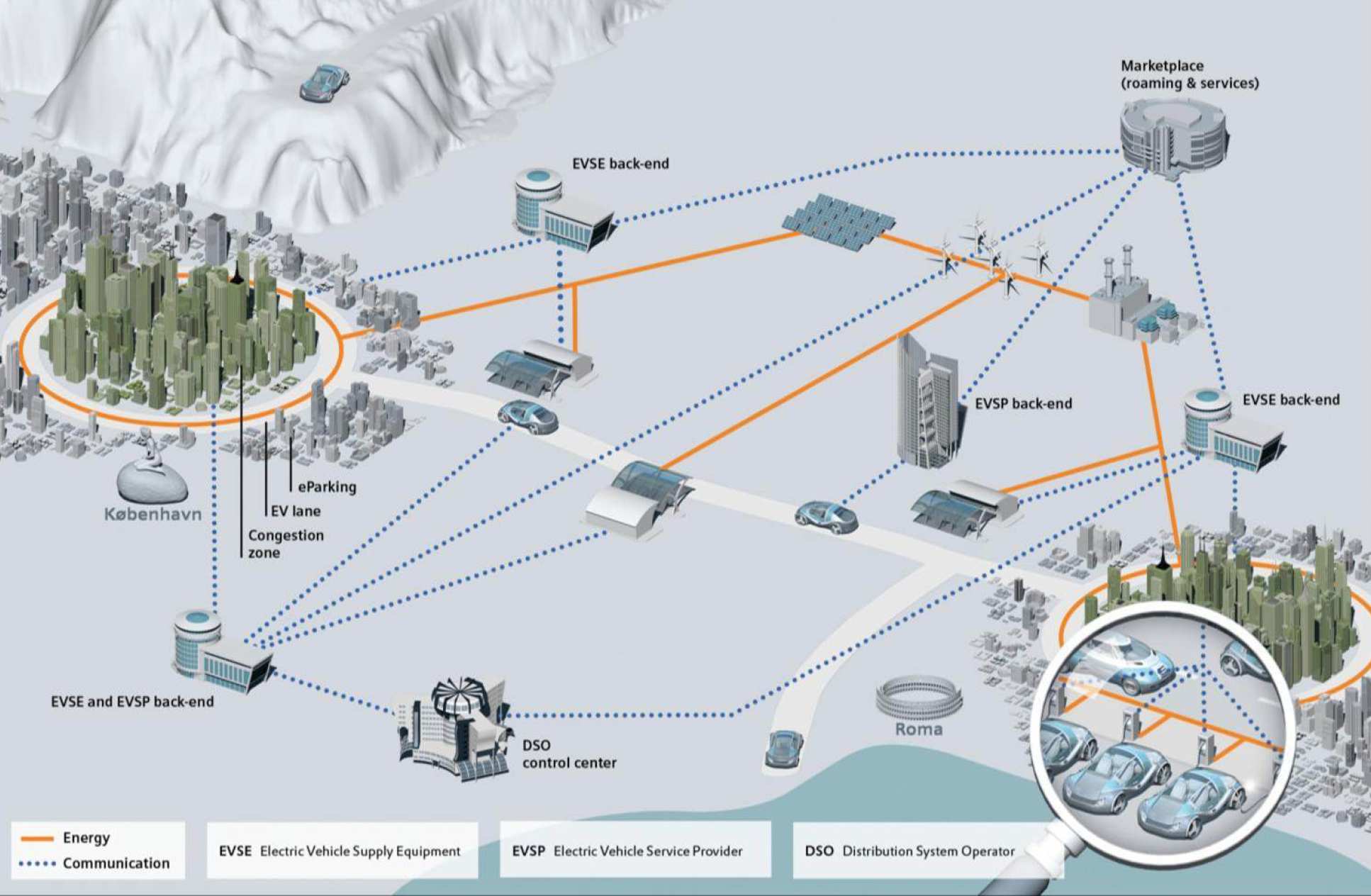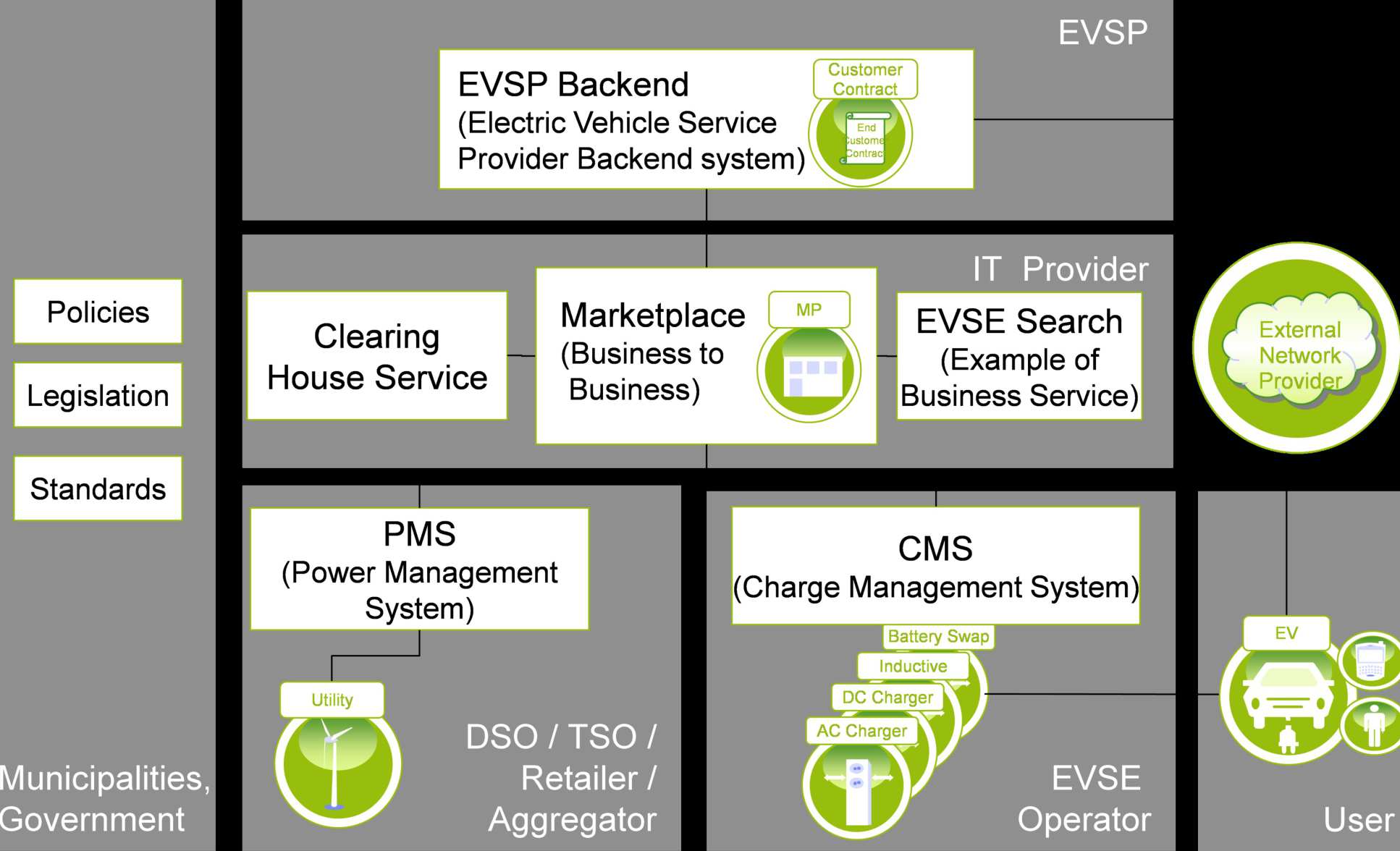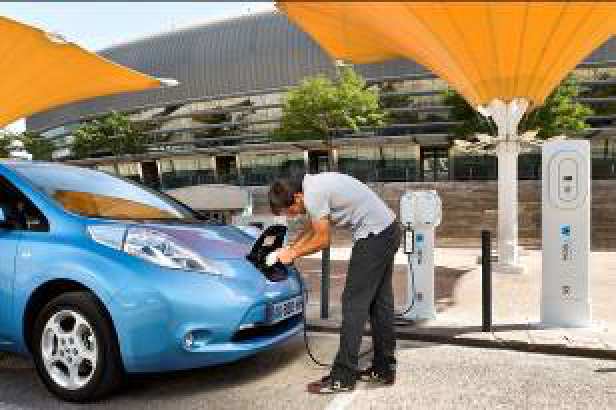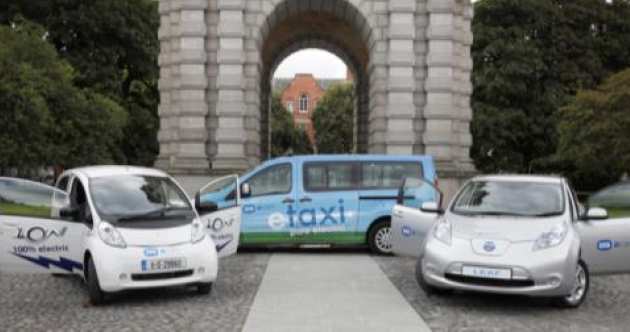Green eMotion
Development and demonstration of a unique and user‐friendly framework for green electromobility in Europe

Green eMotion is the leading EU-funded electromobility project. By using the combined know-how of 43 partners from different stakeholders groups, Green eMotion addresses the following topics:
- Improvement of standards for an interoperable electromobility system especially for the involved ICT systems.
- Implementation of a European electromobility marketplace with open IT architecture that supports Europe-wide roaming with electric vehicles (EVs).
- Preparation of policy guidelines about the success factors and barriers for launching the mass market for electromobility.
- Evaluation of an extensive data collection program in 10 demo regions covering dynamic monitoring of 600 electric cars and 1,800 charging points.
- Impact analysis of different EV charging strategies on the electricity system.
The aim of Green eMotion is to define and demonstrate an interoperable and therefore user-friendly electromobility system based on existing installations and the experience thus gained. The project defines the framework for electromobility and both defines and analyses which components and implementations are still needed today. These components are implemented as examples in 10 demonstration regions throughout Europe: Iberdrola (Spain), Endesa (Spain), Italy, Ireland, Strasbourg (France), Karlsruhe/Stuttgart (Germany), Berlin (Germany), Copenhagen (Denmark), Bornholm (Denmark), Malmo (Sweden)
The 43 partners in the initiative – including industrial companies, automobile manufacturers, utilities, municipalities, universities, and technology and research institutions – put into this project their expertise and experiences on electromobility from the different stakeholder views.
Imperial’s role in the project is to develop a new whole-system analytical framework to understand the impact of electricity demand for EV charging on the operation of the electricity system as well as the required investment into generation, transmission and distribution infrastructure. This analytical framework allows us to estimate the economic and environmental impact of a Europe-wide EV rollout on the operation and design of the future European electricity system, as well as quantify benefits from adopting smart charging strategies.

Detailed project description
In March 2011, the European Commission kicked off a four-year European-wide project to prepare the European mass market for electromobility – Green eMotion. The aim of Green eMotion is to define and demonstrate an interoperable and therefore user-friendly electromobility system based on existing installations and the experience thus gained. The project defines the framework for electromobility and both defines and analyses which components and implementations are still needed today. These components will then be implemented as examples in the 10 demo regions throughout Europe: Iberdrola (Spain), Endesa (Spain), Italy, Ireland, Strasbourg (France), Karlsruhe/Stuttgart (Germany), Berlin (Germany), Copenhagen (Denmark), Bornholm (Denmark), Malmo (Sweden)
The 43 partners in the initiative – including industrial companies, automobile manufacturers, utilities, municipalities, universities, and technology and research institutions – put into this project their expertise and experiences on electromobility from the different stakeholder views.
Green eMotion has implemented and tested an ICT system for a European marketplace for electromobility services. For the first time, this B2B marketplace for business transactions brings together all the participants involved in electromobility: providers of charging services, charging station operators, power utilities, and providers of other electromobility-related services. Its aim is to provide electric car users with European-wide access to a charging infrastructure that is simple to operate.
This marketplace permits the associated service offering – for example, roaming between different charging point operators – to be provided on a pan-European scale, similar to today’s practices with cell phones. Furthermore, the B2B marketplace is open to other service providers, allowing innovative new concepts for electromobility to be made available in an uncomplicated manner. The marketplace is the central technological component for the purpose of reducing the number of interfaces between participants and providing easy access to all offerings through standardised software services.
Almost all the Green eMotion demo regions in Europe have tested this B2B marketplace, linking their IT systems to the marketplace via open standard interfaces. The published description of the open system architecture and of the standardised interfaces and business objects enables all market participants to develop and offer the services in accordance with their own business models. Drivers of electric cars can make use of these services, which provide access to a variety of electromobility offerings. The Green eMotion marketplace for electromobility can also communicate with other marketplaces, such as pre-existing regional solutions. The goal is to create a truly comprehensive grid for Europe’s electric vehicles users.
 Directly connected to the ICT topic are the standardisation needs for an interoperable electromobility system. Green eMotion has run a whole scale evaluation on existing standards (including also the safety area). Our gap analysis showed that the identifiers and interfaces for the electromobility ICT systems are the major part where we still miss standards. So Green eMotion started with many other market players the “eMI3” group – the “eMobility ICT Interoperability Interest Group”. The goal of this group is to define a common set of standardised interfaces for communication between the different ICT systems necessary for a convenient user experience when using electric cars. This covers also data formats for identification and authorisation on marketplace systems, which will allow for a roaming functionality with EVs.
Directly connected to the ICT topic are the standardisation needs for an interoperable electromobility system. Green eMotion has run a whole scale evaluation on existing standards (including also the safety area). Our gap analysis showed that the identifiers and interfaces for the electromobility ICT systems are the major part where we still miss standards. So Green eMotion started with many other market players the “eMI3” group – the “eMobility ICT Interoperability Interest Group”. The goal of this group is to define a common set of standardised interfaces for communication between the different ICT systems necessary for a convenient user experience when using electric cars. This covers also data formats for identification and authorisation on marketplace systems, which will allow for a roaming functionality with EVs.

Green eMotion runs an extensive data collection program in its 10 demo regions. In total 600 electric cars and 1,800 charging points are monitored today. The technical workpackages of Green eMotion and the workpackage for “technical, environmental, economic and social evaluation” are analysing this dynamical data to generate further results.

In addition to the above described topics, Green eMotion is also working toward important developments in other areas:
- On the Green eMotion Internet pages reports about infrastructure planning on different levels (Deliverable 1.5) or on the performance of EVs in fleets (Deliverable 1.7) can be found.
- Green eMotion’s partner cities have prepared policy guidelines about the success factors and barriers for launching the mass market for electromobility. This reports are currently in the internal review and will be available soon on the Dissemination pages of the Green eMotion website.
- In addition to building selected charging systems, infrastructure partners in Green eMotion investigate the effects of different charging strategies on the grid.
Imperial’s role in the project is to develop a new whole-system analytical framework to understand the impact of electricity demand for EV charging on the operation of the electricity system as well as the required investment into generation, transmission and distribution infrastructure. This analytical framework is used to estimate the economic and environmental impact of a Europe-wide EV rollout on the operation and design of the future European electricity system, as well as quantify benefits from adopting smart charging strategies. The results of this analysis are described in Deliverable 9.2, which is expected to become publicly available from the Green eMotion website in early 2015.
More details available at: www.greenemotion-project.eu
Other project details
- Funding body: European Commission, Seventh Framework Programme (Grant No. 265499)
- Duration: 1 March 2011 – 28 February 2015
- Total budget: €40.7m (EC contribution: €24.2m)
- Imperial’s budget: €929k (EC contribution: €707k)
- Number of partners: 43
CAP people
- Dr. Marko Aunedi (m.aunedi@imperial.ac.uk)
- Prof. Goran Strbac (g.strbac@imperial.ac.uk)
- Prof. David Newbery (d.newbery@imperial.ac.uk)
- Dr. Danny Pudjianto (d.pudjianto@imperial.ac.uk)
- Predrag Djapic (p.djapic@imperial.ac.uk)
- Dr. Dimitrios Papadaskalopoulos (d.papadaskalopoulos08@imperial.ac.uk)
External partners involved in the project
- Industrial partners: Alstom (UK), Bosch (D), IBM (D), SAP (D), Siemens (D, Project Coordinator)
- Power utilities: Danish Energy Association (DK), EDF (F), Endesa (ES), Enel (I), ESB (IR), Eurelectric (B), Iberdrola (ES), RWE (D), PPC (GR), Verbund (AU)
- Electric Vehicle Manufacturers: BMW (D), Daimler (D), Nissan (H), Renault (F)
- Municipalities: Barcelona (ES), Bornholm (DK), Copenhagen (DK), Cork (IR), Dublin (IR), Malaga (ES), Malmö (S), Rome (I)
- Research Institutions and Universities: Cartif (ES), Cidaut (ES), CTL (I), DLR (D), DTU (DK), ECN (NL), Imperial (UK), IREC (ES), RSE (I), TCD (IR), Tecnalia (ES), TNO (NL)
- EV Technical Institutes: DTI (DK), FKA (D), TÜV Nord (D)


